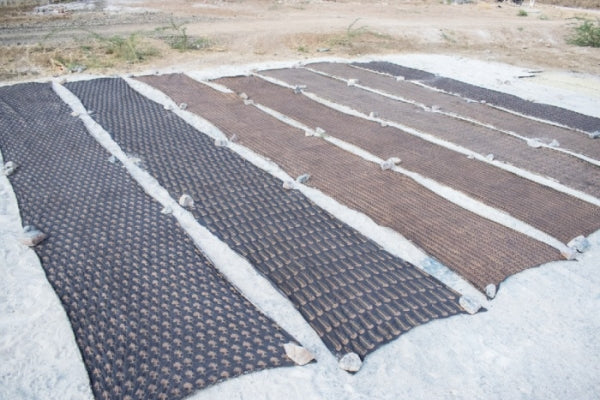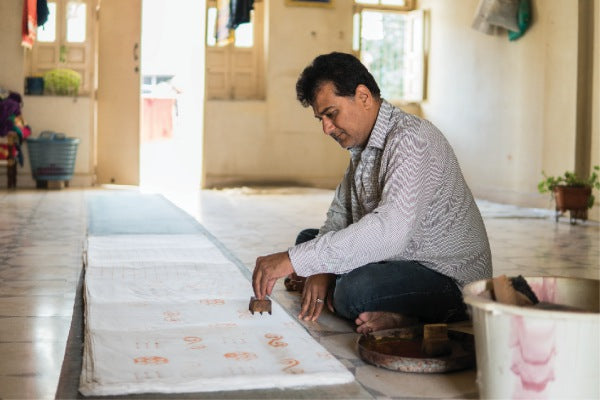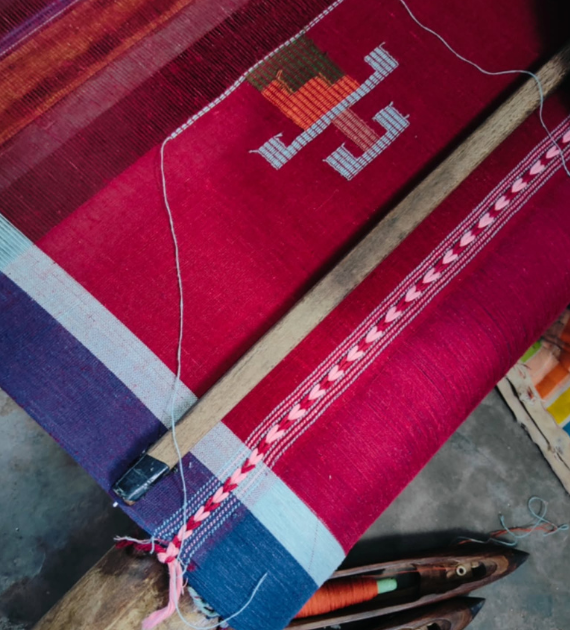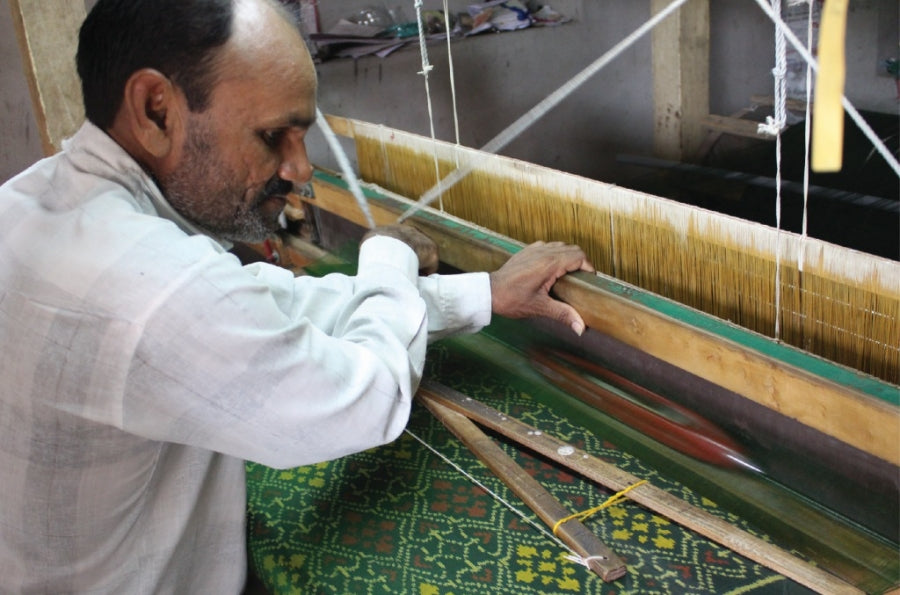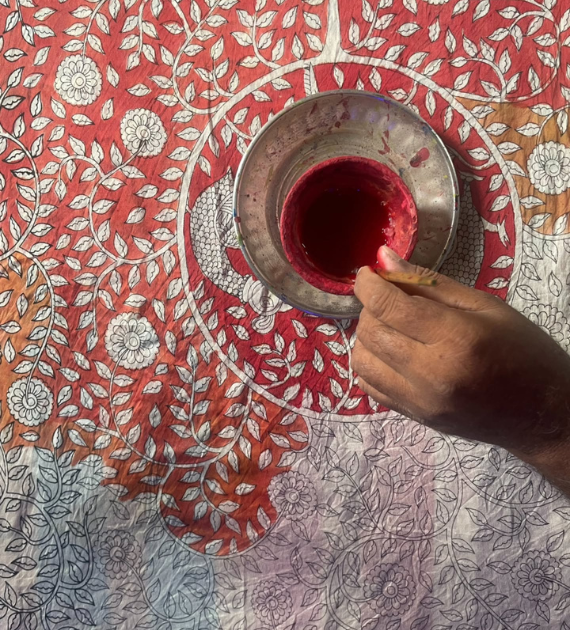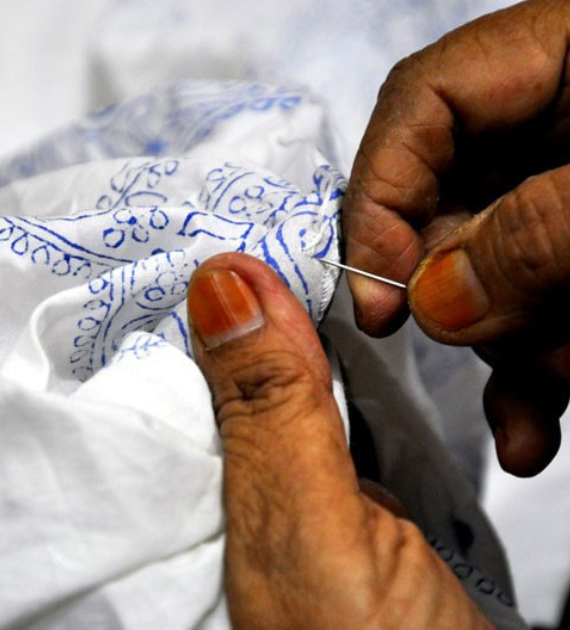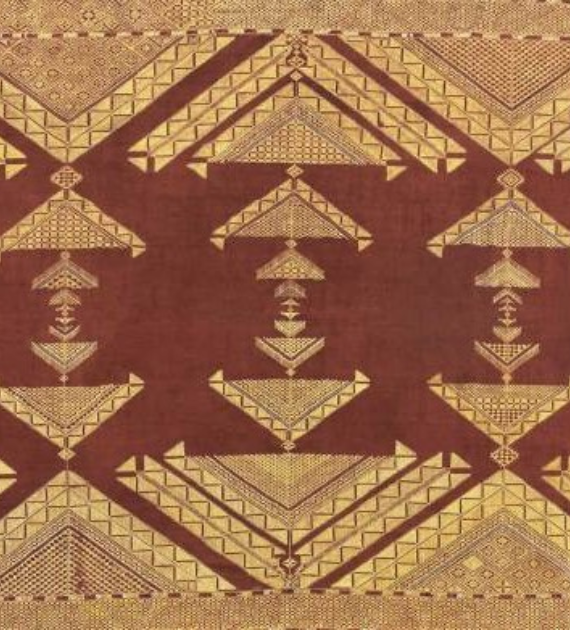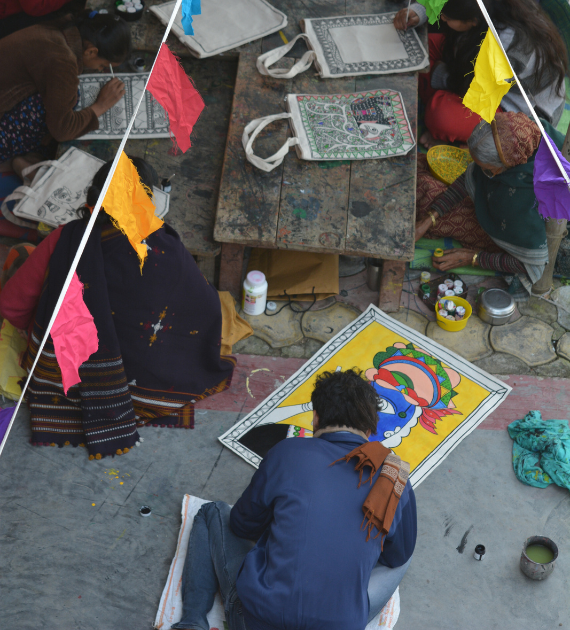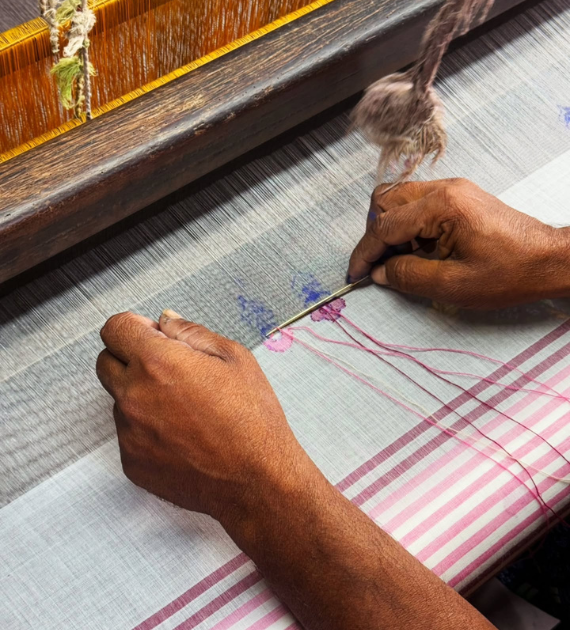Sort by:
Mata ni Pachhedi Chanderi Silk Dupatta
Rs. 10,000.00
Mata-ni-Pachedi is a traditional art of painting the image of goddesses on a piece of cloth found in the temple which is of a multicolored animated images of gods and...
Mata ni Pachhedi Chanderi Silk Dupatta
Rs. 10,000.00
Made by : Ajitbhai This product is hand painted with natural dyes and may have slight irregularities that are a natural outcome of the human involvement in the process. More Details: SHIPPING...
Mata ni Pachhedi Chanderi Silk Dupatta
Rs. 10,000.00
Made by : Ajitbhai This product is hand painted with natural dyes and may have slight irregularities that are a natural outcome of the human involvement in the process. More Details: SHIPPING...
Mata ni Pachhedi Chanderi Silk Dupatta
Rs. 10,000.00
Made by : Ajitbhai This product is hand painted with natural dyes and may have slight irregularities that are a natural outcome of the human involvement in the process. More Details: SHIPPING...
Mata ni Pachhedi Chanderi Silk Dupatta
Rs. 10,000.00
Made by : Ajitbhai This product is hand painted with natural dyes and may have slight irregularities that are a natural outcome of the human involvement in the process. More Details: SHIPPING...
Mata ni Pachhedi Chanderi Silk Dupatta
Rs. 10,000.00
Made by : Ajitbhai This product is hand painted with natural dyes and may have slight irregularities that are a natural outcome of the human involvement in the process. More Details: SHIPPING...
Mata ni Pachhedi Chanderi Silk Dupatta
Rs. 10,000.00
Made by : Ajitbhai This product is hand painted with natural dyes and may have slight irregularities that are a natural outcome of the human involvement in the process. More Details: SHIPPING...


